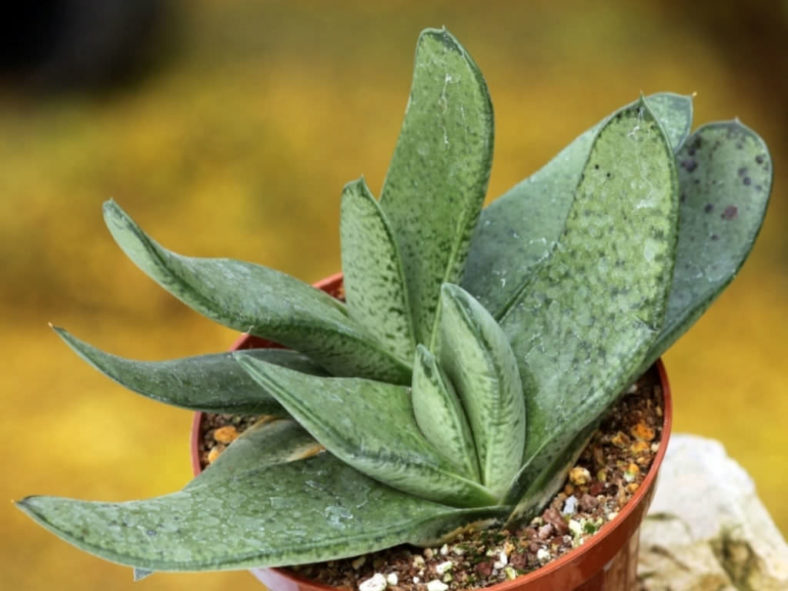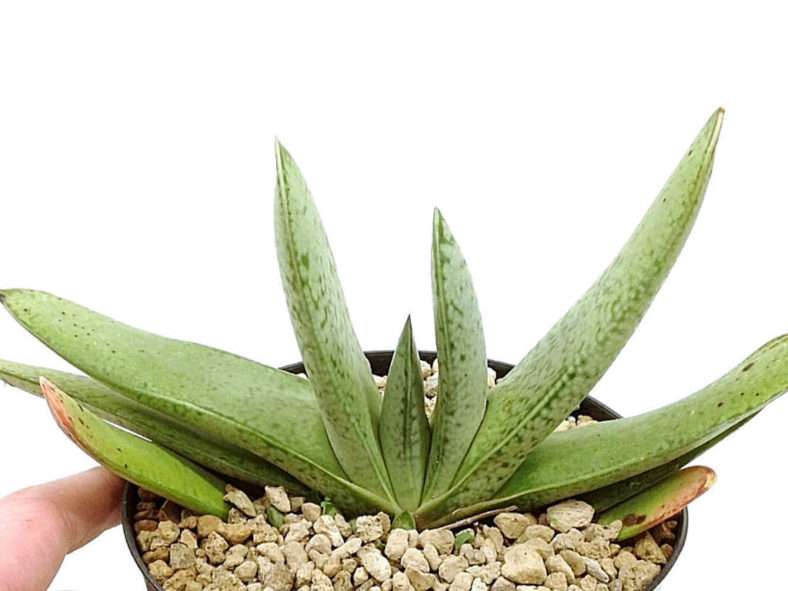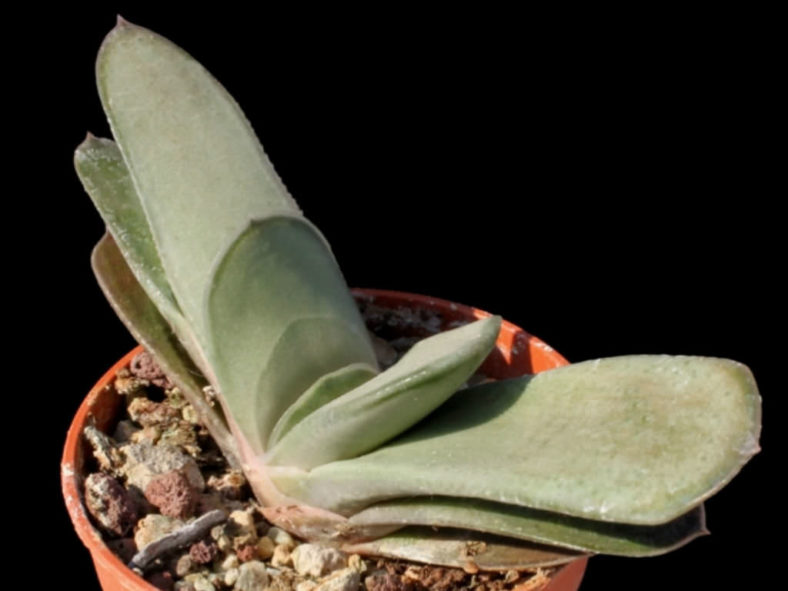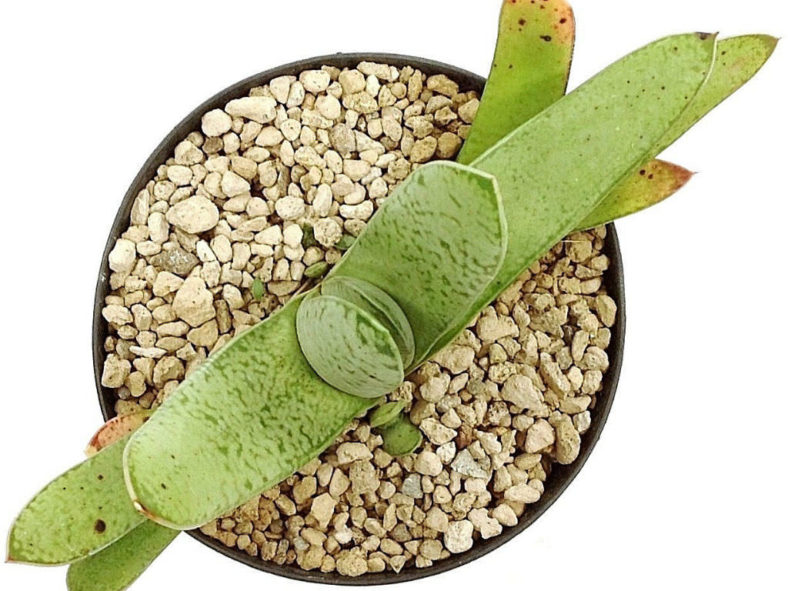Scientific Name
Gasteria gracilis Baker
Scientific Classification
Family: Asphodelaceae
Subfamily: Asphodeloideae
Tribe: Aloeae
Genus: Gasteria
Origin
Gasteria gracilis is not currently considered a valid species. It was described a long time ago (Baker 1880), but no preserved samples exist. Some relate it to Gasteria bicolor.
Description
Gasteria gracilis is a small succulent with fleshy, fat, tongue-like leaves arranged alternately in two opposite vertical rows. It is a stemless plant that can grow up to 3 inches (7.5 cm) in width. The leaves are smooth and variable in color, ranging from shiny green to green speckled or pale grayish-green.
The flowers are reddish-pink and green and usually appear from midwinter to spring. They can grow up to 0.8 inches (2 cm) long.

Hardiness
USDA hardiness zone 9b to 11b: from 25 °F (−3.9 °C) to 50 °F (+10 °C).
How to Grow and Care
These plants are often grouped with Haworthias because they have similar cultural requirements. Both are attractive small succulents that can tolerate more shade than many other succulents, making them more suitable as houseplants.
Gasterias are susceptible to fungal infections, which usually appear as black spots on the leaves. These result from too much humidity or water on the leaves, but they should not spread too quickly. They have a natural defense mechanism against such fungal attacks: They attack the invading organism and seal off the wounded spot. Generally, any place where Haworthia and Aloe thrive will be hospitable to a Gasteria.
These succulents are small, shallow-rooted, and relatively slow-growing. Therefore, they are often grown in small clusters in wide, shallow dishes. Over time, clusters will naturally enlarge as the mother plant sends off small plantlets.
Learn more at How to Grow and Care for Gasteria.
Links
- Back to genus Gasteria
- Succupedia: Browse succulents by Scientific Name, Common Name, Genus, Family, USDA Hardiness Zone, Origin, or cacti by Genus
Photo Gallery
Click on a photo to see a larger version.


